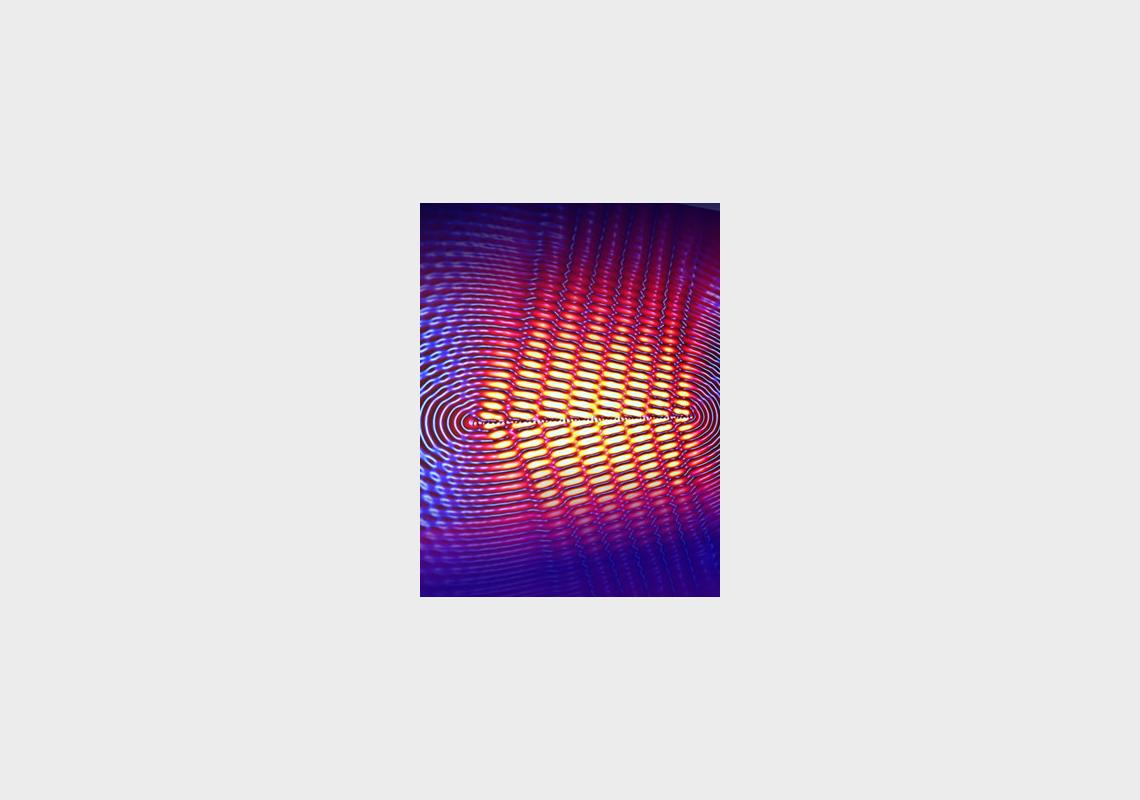Shining polarized light onto a gold surface containing nanoslits rotated at various angles generates V-shaped wakes of surface plasmons, known as Cherenkov wakes. © 2016 A*STAR Singapore Institute of Manufacturing Technology
Two-dimensional, controllable light-like waves on a metallic surface, created by researchers at Singapore's Agency for Science, Technology and Research (A*STAR) and co-workers at Harvard University, and analogous to the wake of a boat moving through water, have potential applications in nanoscale photonics.
A wake forms behind an object moving through a medium faster than the speed that a wave travels in that medium. One example is the sonic boom created by a supersonic jet. The optical version of this phenomenon, known as Cherenkov radiation, occurs when a charged particle moves faster than the speed of light in a medium. The eerie blue glow given off by nuclear reactors immersed in cooling water is caused by this effect.
Now, Patrice Genevet at the A*STAR Singapore Institute of Manufacturing Technology and his co-workers have generated the two-dimensional equivalent of Cherenkov radiation in a gold film containing a row of nanoscale slits oriented at various angles [1].
When polarized light is shone obliquely on the gold film (see image), it excites free electrons (the ‘water’) in the gold: this produces a wave of charge (the ‘boat’) that travels faster along the surface than light-like waves known as surface plasmons. Consequently, the wave of charge leaves V-shaped waves of surface plasmons in its trail (the ‘wake’).
These waves were difficult to capture as they are confined to the surface of the gold. The team addressed this by using a near-field scanning microscope to ‘lift’ the waves off the surface, allowing their intensity to be measured.
Using an ensemble of nanostructured apertures, the scientists were even able to steer these waves by varying the nanoslit angles and the incident angle of the light beam. “We had a feeling that the running wave of charge could be manipulated to control the angle of surface plasmon wakes,” says Genevet. “On seeing the first experimental near-field images, we realized our intuition was correct. There is nothing more gratifying than taking the vision of a physical effect and making it a reality.” This controllability will be important for realizing practical applications of the effect.
In particular, the effect could be used to create new types of surface-plasmon-based optical components, such as plasmonic holograms and directional plasmonic lenses, Genevet says. He is also excited about the potential to manipulate light on tiny scales. “We are fortunate to be doing this research when nanotechnologies are really taking off,” Genevet says. “Photonics at nanoscale is having a remarkable impact on optics, and our findings will hopefully help to better understand the excitation mechanisms of surface electromagnetic waves.”
The A*STAR-affiliated researchers contributing to this research are from the Singapore Institute of Manufacturing Technology
References
[1] Genevet, P., Wintz, D., Ambrosio, A., She, A., Blanchard, R. & Capasso, F. Controlled steering of Cherenkov surface plasmon wakes with a one-dimensional metamaterial. Nature Nanotechnology 10, 804–809 (2015).
[2] Chen, H., Duan, Z. & Chen, M. Metamaterials: Steering surface plasmon wakes. Nature Nanotechnology 10, 736–737 (2015).



